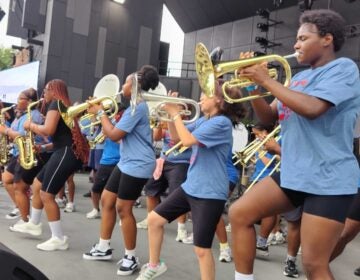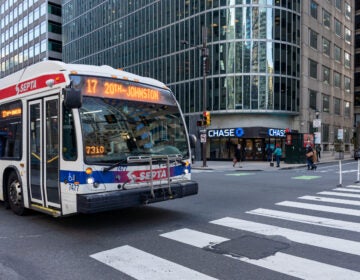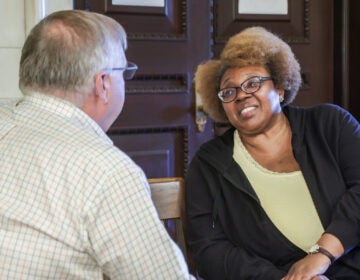Penn Charter School’s land use guideline proposal unveiled
Members of the East Falls Community Council’s William Penn Charter Land Use Work Group (PCLU), in conjunction with representatives of William Penn Charter School, unveiled a proposal Tuesday night for land-use guidelines at the school.
Working under a mandate set by the Philadelphia City Planning Commission, the community meeting was the second public preview of land-use plans being developed by the EFCC for three prominent educational institutions in East Falls.
The Drexel University-Queen Lane Work Group’s findings were presented in October, as reported by Newsworks.
The results of the Philadelphia University Work Group are still in preparation – according to Tom Sauerman, President of the EFCC and member of the PCLU, the date for its public presentation has not been determined.
Traffic control and parking
Ted Swenson, East Falls resident and Chair of the PCLU, led the presentation of the committee’s findings.
Swenson noted that while the PCLU’s work was “99-percent completed,” he stressed to those present that the five-page proposal before them was, in his words, “a working document,” and therefore open for revision.
Of the eight topics identified by the PCLU as significant to their mission and pertinent to Penn Charter, parking and traffic were the issues with the greatest impact in the neighborhood.
PCLU findings indicate that, at present, onsite parking is approximately 20 spaces short of current demand.
The overflow, according to Swenson, generally goes to Coulter Street, which serves as the southeastern boundary of the school’s 44-acre campus.
Swenson mentioned that work is currently being done by student “green” groups at both Penn Charter and Philadelphia University to systematically address this situation.
An additional dilemma is the ongoing challenge of exiting Penn Charter’s campus onto School House Lane, which forms the northwestern boundary of the school.
This condition is typically caused by vehicles parked closely to the school’s driveway, thereby limiting visibility – a condition exacerbated by speeding motorists.
While not ostensibly the responsibility of Penn Charter – roadways fall under city jurisdiction – according to the land-use documents, the school and EFCC are currently in consultation with municipal agencies to remedy this problem.
Swenson also voiced concerns about de facto student pick-up and drop-off locations on Coulter St. and The Oak Road, resulting in congestion and the disruption of residential quality of life.
He noted that there is an ongoing discussion with parents to, in Swenson’s words, “get them better behaving,” and with EFCC to investigate, and possibly implement, additional traffic control measures.
A positive response
Of the remaining items addressed in the land-use guideline document, discussion was largely favorable.
Property maintenance and environmental impact efforts – “greening” – at Penn Charter were both lauded.
The location and scale of new buildings are of minimal concern as Penn Charter has expressed no interest in expanding beyond its current enrollment of approximately 960 students.
While there are strategic plans to rehabilitate or replace the Lower School facility at Penn Charter, those present expressed minimal concern at this possibility, largely because the Lower School building is centrally-situated on the school’s 44-acre campus, thus having negligible impact on surrounding residences.
In closing, Swenson praised Penn charter for its communication with and commitment to the community.
“Penn Charter has shown every interest in being open to input and dialogue and transparency,” he said, adding, “The spirit of the document, and the spirit of the work, is great.”
“It’s terrific for going forward,” he concluded.
‘A complex process’
Following Tuesday night’s public review of the proposal – drafted by the work group and Penn Charter in 2011 – Sauerman will make any necessary amendments to the land-use guidelines for resubmission to the PCLU.
Following the completion of the Philadelphia University land-use plan, the three proposals will be merged and forwarded to the Philadelphia City Planning Commission.
After submission to the PCPC, the grand plan will then be presented to the community at large for approval, required by the city to take the form of an “up/down” vote.
The finalized version of the land-use guidelines are then filed with PCPC.
A meeting of the East Falls Land Use Advisory Committee – with representatives from each of the three work groups – will take place next month to review the two proposals on hand, and get a status update on the Philadelphia University land-use plan.
“It’s (the Advisory committee’s) responsibility to see that it is all pulled together and remains faithful to what the three groups have said,” said Sauerman.
“It’s a complex process,” he observed.
WHYY is your source for fact-based, in-depth journalism and information. As a nonprofit organization, we rely on financial support from readers like you. Please give today.




